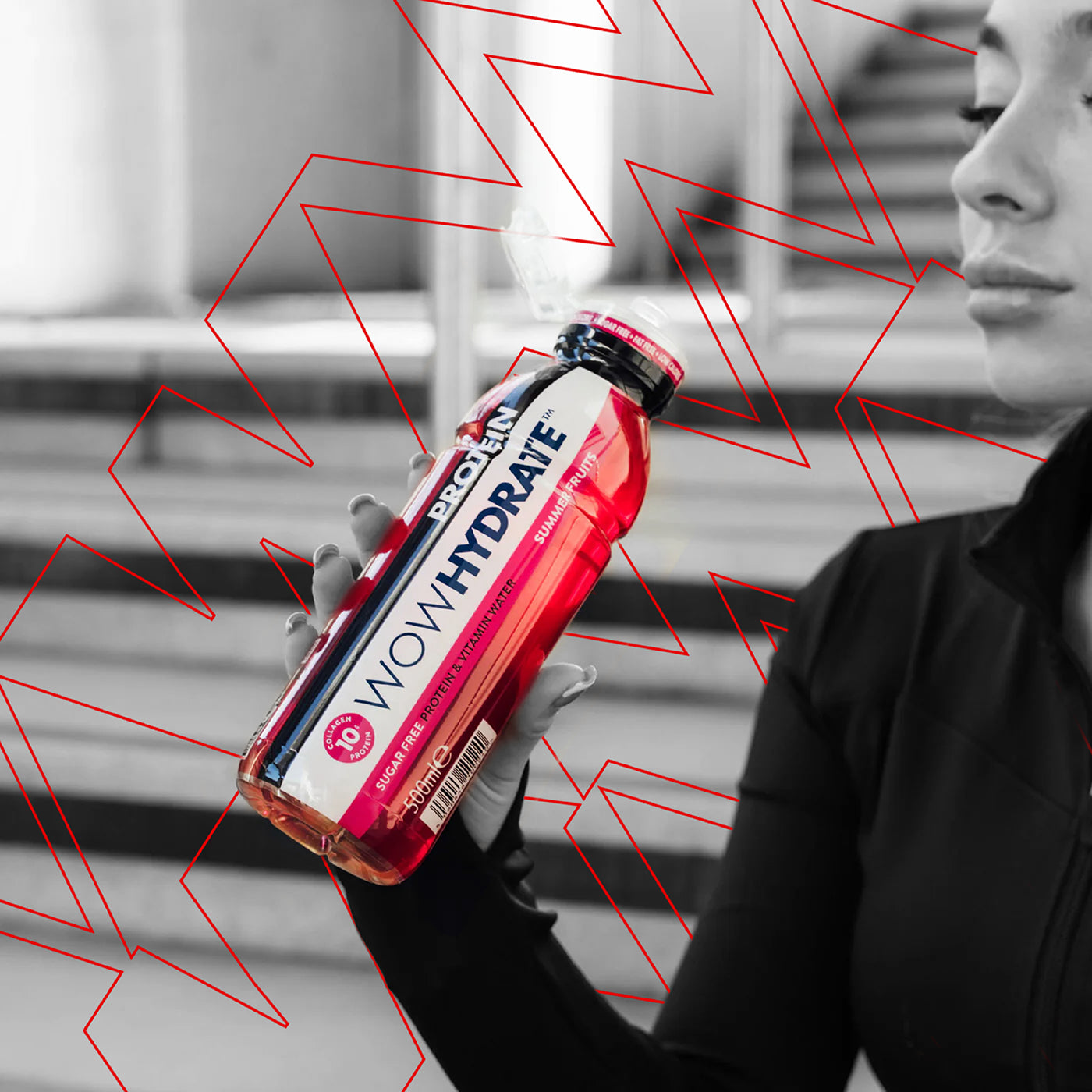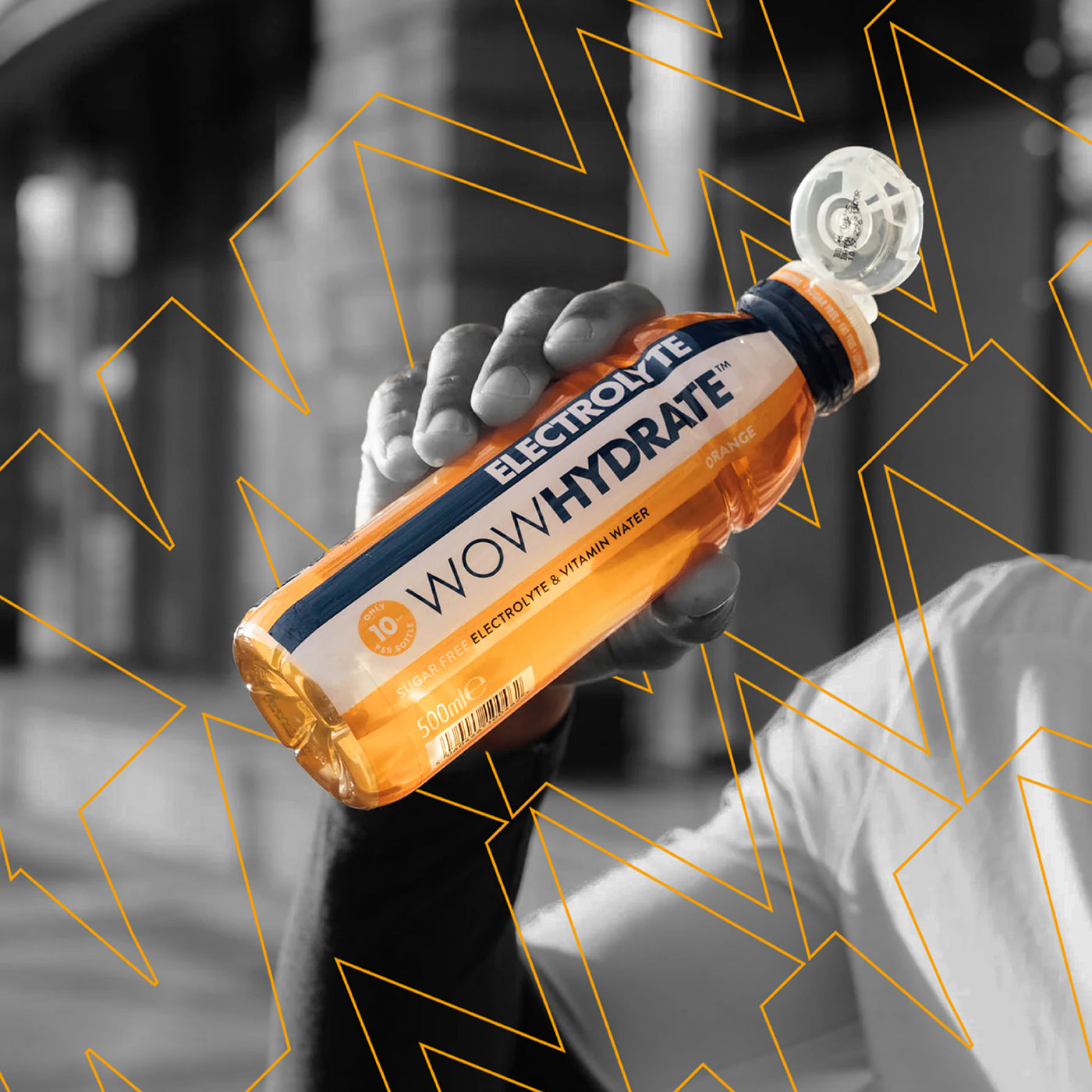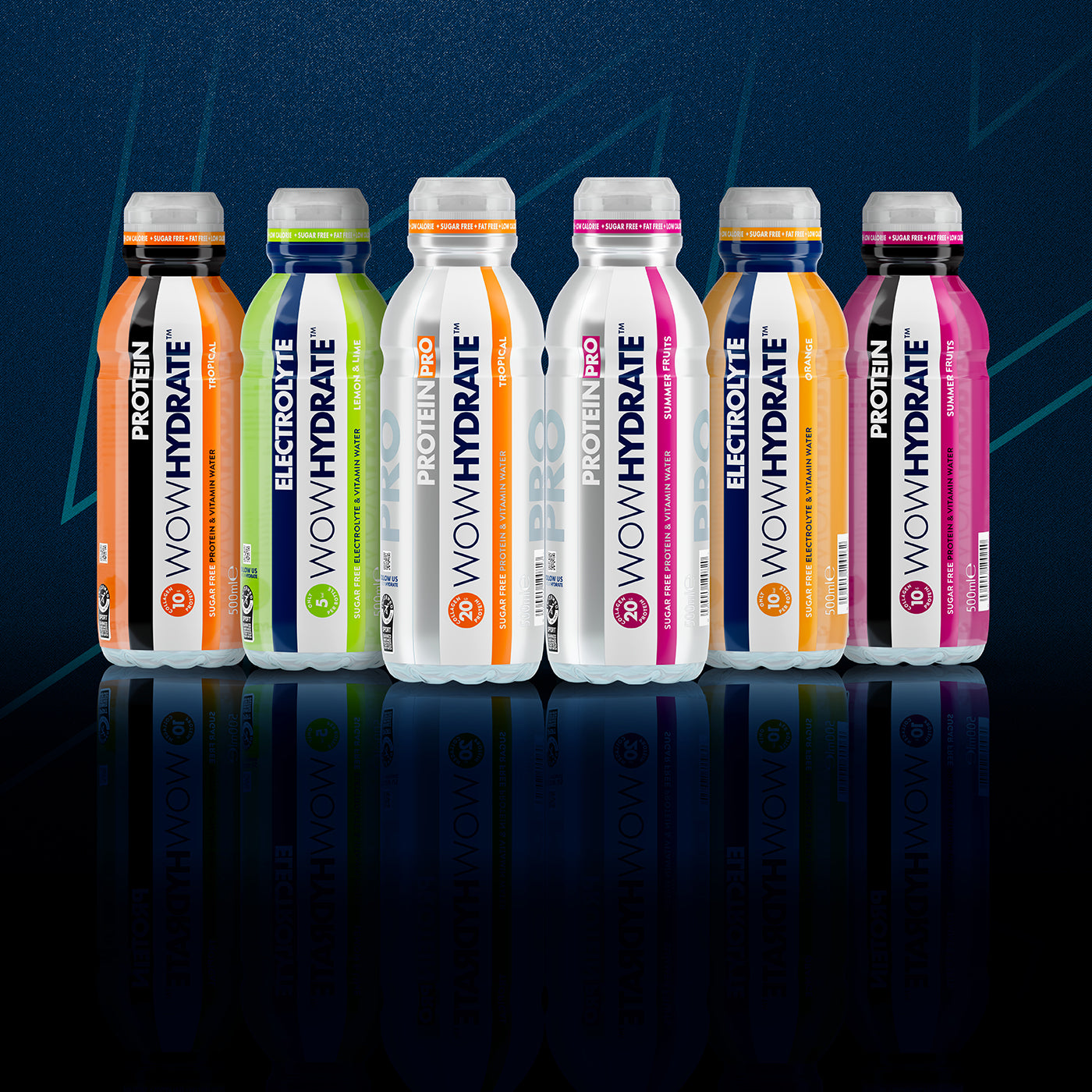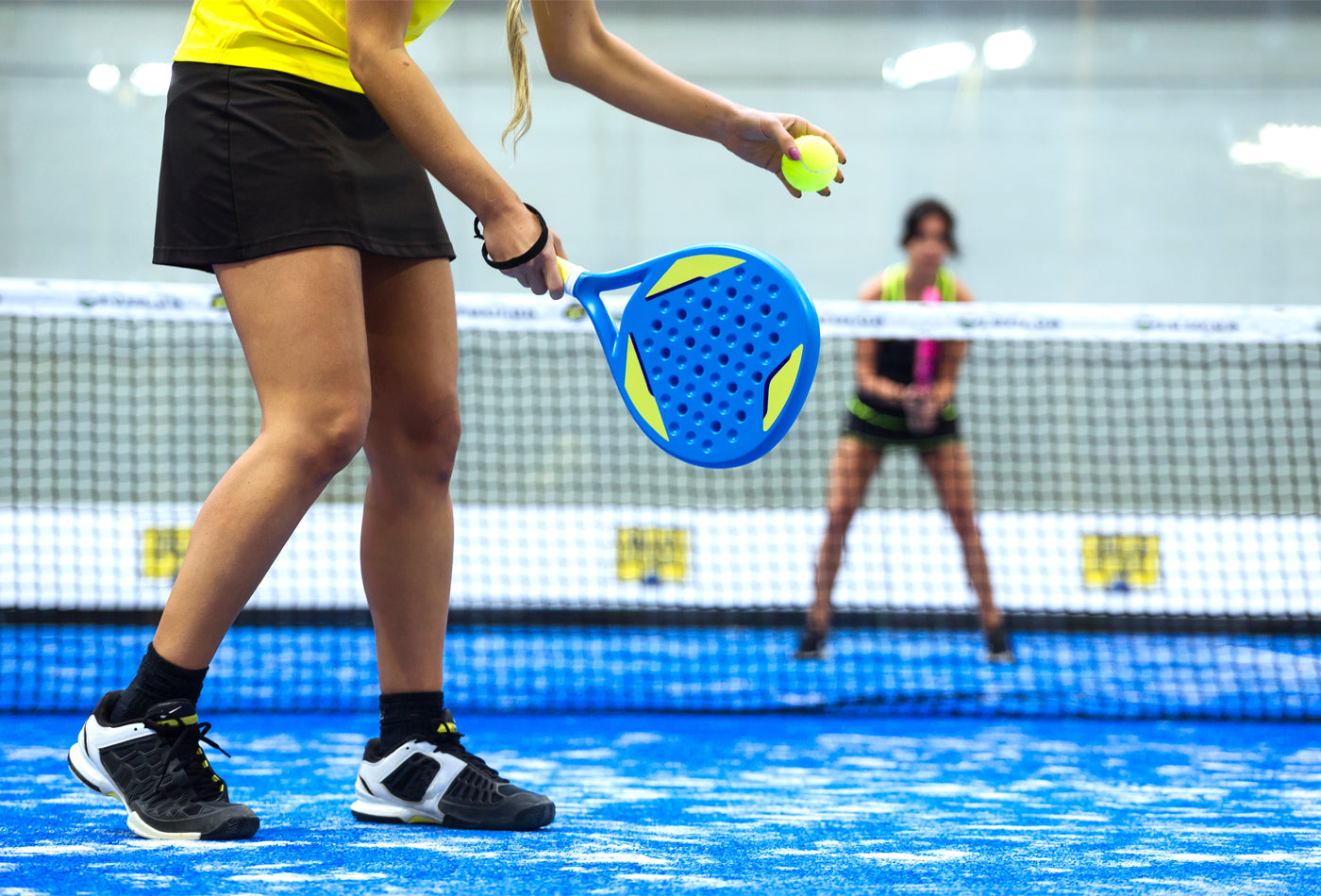Hot on the heels of tennis, padel is becoming one of the fastest growing sports in the world with courts popping up all over the UK. Whether you’re looking to take up tennis or padel for the first time, or you already enjoy playing one and are curious about the other, this is the guide you need to decide which of these two racket-based sports will best fit your goals.
Which Racket Sport Reigns Supreme?
Tennis has been a firm favourite in the UK since Victorian times, with over 5 million Brits having played it in the last year.
Padel is, relatively, a lot younger, beginning in Mexico in the 1960s - but with more than 150 padel courts popping up across the UK, Britain is now one of the top 3 padel markets in the world.
If you're still not convinced of padel's growing popularity, an endorsement from celebrities like Andy Murray and Stormzy might. There are even rumours that padel could become an Olympic sport.
But does fast-growing automatically mean it’s better than tennis? The best way to understand how these sports differ is to compare them on various key features:
Court Size
Padel courts are much smaller than tennis courts, at about a third of the size; 10m wide, 20m long, and enclosed with glass walls that are used as part of the game. This makes the sport preferable for beginners who want to enjoy more game play, as the enclosed nature of the padel court means there are more rebounds and therefore more chances to hit the ball.
Difficulty
Padel is considered easier than tennis due to the smaller court, slower ball, longer rallies, and easier underhand serves. Generally, there is less technique required to keep the game moving, and walls on the court keep the ball in play for longer using creative rebounds, which can be enjoyable to those who want more of a social experience. Also, padel is always a doubles game, and a 2023 study published in Human Kinetics Journals found padel is more similar in style to doubles tennis.
Tennis is thought to require more technical skill, strength and mobility. There is usually a steeper learning curve due to the overhand serves and faster ball speed. A 2025 study published in Frontiers in Sports and Active Living found tennis involves more movement over larger distances, higher speeds, sprinting, and longer rest intervals. Ultimately, the difficulty of each sport depends on how often you play, how advanced you are, and your fitness level, so while tennis may be more difficult for some, this may not be the case for you.
Players
Tennis can be played as either a singles game (one player on each side of the net) or a doubles game (two players on each side of the net). This offers flexibility if you don’t always have four players available.
The fast-paced style of padel combined with the doubles format encourages teamwork, communication, and overall a more social experience, which makes it appealing to recreational players.
It seems padel could be attracting more women, too – data suggests 30% of padel players are women compared to 15% of tennis players. One London padel coach said, “We're seeing a mix of women, young people, and older players”, highlighting diversity in the sport.

Calorie Burn
If it’s a workout you want, then either sport could provide this, but the estimated calorie burn varies. The Lawn Tennis Association estimates padel burns 400+ calories per game, whereas tennis can burn between 400-600 depending on whether you play a singles or doubles game.
If the goal is to lose weight and improve overall fitness, padel could potentially be the best choice for women, as a 2018 study on the fitness benefits of padel practice in women aged 35-55 years old found that female players get better conditioning, cardiovascular fitness and body composition.
Equipment
You might think you could use any old racket and ball, but padel and tennis equipment is made to support the features of each sport.
Padel requires:
- A paddle with a solid face made of foam, fibreglass or another material – no strings! It’s smaller and lighter than a tennis racket, and the shape can be diamond, teardrop or round. It usually has a strap to help keep the racket in hand. Prices range from around £40 for a basic racket, to £285 for a professional one from popular sports shop, Wilson. Remember, many clubs offer rentals so you can try it out first.
- A less pressurised, smaller ball that bounces off walls more slowly.
- Court rental, which could be on average £30 to £80 depending on location.
Tennis requires:
- A strung racket designed to help the ball spin, and to provide power when swinging. You can choose the best grip size for you, and the price range of a racket is wide depending on how much you want to invest. Wilson has rackets for up to £280, but you can also spend around £40 on a beginner racket – it all depends on your goals.
- A ball with high pressure.
- Court rental – public-use tennis courts may be less expensive to hire, but harder to get a hold of. Private clubs can cost anywhere from £10 to £70 per hour depending on whether it’s an outdoor or indoor court, and the time and location.
Which Sport Suits You?
There are hundreds of sports to choose from, but it can be tough to decide which one is best for you based on ability, preference, accessibility, and other factors. When it comes to choosing between padel or tennis, choose padel if you’re looking for:
- A social sport based on teamwork
- A sport that’s easy to start with a low barrier to entry
- Shorter rallies that emphasise control over power
On the other hand, choose tennis if you’re looking for:
- A solo competition that focuses on mastering technique and skill
- An endurance sport
- The option of either singles or doubles
Take A Swing At Fitness and Fun
The perfect sport for your lifestyle will depend on factors like:
- Your individual goals. Do you want to increase your general fitness? Lose weight and meet new people? Get stronger and master a new skill? Decide what you want to get out of each sport before you make a decision.
- Time in your schedule. Tennis may be a good choice for those with more time to learn the skill, whereas padel can be a more casual option.
- Your fitness level. Depending on your previous sporting experience, either padel or tennis could provide different benefits for your overall fitness.
- Access. Is there a tennis court near your home that you’re more likely to use since it’s close by? Or a newly opened padel court in your neighbourhood? Find out what facilities are near you, and check prices.
- Your gut feeling! Sometimes we are drawn to a sport for no real reason. If you find yourself curious to try either padel or tennis, give it a go and don’t overthink it.

Serve Up Hydration and Nutrition
Regardless of which sport you choose, staying properly hydrated and fuelled before, during and after play is important. Here are some things to keep front of mind:
- Drink plenty before your match, at least 1-2 hours before you start, and sip on liquids regularly during breaks in play – don’t wait until you get thirsty!
- Choose electrolyte drinks for high-intensity activities like padel to prevent muscle cramp, and protein-enriched drinks to fuel longer matches, like in tennis, as well as help muscles recover more quickly
- Avoid drinking caffeine or alcohol before your match, as these can make you dehydrated - WOW HYDRATE’s waters provide the perfect mix of electrolytes, vitamins and high quality collagen protein, and they're also caffeine free!
- Eat a small meal of complex carbohydrates (such as oats) around 1-3 hours pre-match to give you sustained energy
- Snack on hydrating fruits and vegetables like orange or cucumber to increase fluid intake
- Eat a protein-rich meal after your match to help repair muscles – you can learn more about the importance of this in our guide to whether to take protein before or after a workout
Ultimately, the best way to decide which sport is for you is to try them both (many clubs offer trial sessions and equipment rental so you can try-before-you-buy), and see which feels most natural and enjoyable to you. No matter which option you choose, WOW Hydrate’s electrolyte and protein waters can keep you fuelled throughout your match.
Game, set, hydrate.

Bonus: Frequently Asked Questions about Padel vs Tennis
What are the main differences between tennis and padel?
The main differences between tennis and padel are:
- The court – padel courts are around 3x smaller than tennis courts, and are walled
- Equipment – padel rackets are lighter, smaller, and unstrung
- Rules – padel allows the ball to bounce off walls, and the ball must hit the floor once before it reaches the other player
- Singles/doubles – padel is always played in doubles, while tennis is played in either singles or doubles
- Serves – padel uses an underhand serve, while tennis uses an overhand serve
Which sport is easier for beginners to pick up?
Padel is considered easier for beginners to pick up than tennis due to its smaller court size, slower ball speed, and use of walls. It also uses an underhand serve, which is easier for most people to master. While it can take new players a while to get to grips with tennis, padel is a game most people can start to enjoy straight away.
Is padel more social than tennis?
Padel is thought to be more social than tennis because it’s always played in doubles, so there are more people on the court, and this encourages teamwork and communication between players.
How do the costs of playing padel and tennis compare?
While padel was more affordable to start just a few years ago, its popularity means it is now on par with tennis in terms of the cost to start playing. Padel requires a racket that could range from £40 for a basic one to £285 for a professional one, but remember, many clubs will offer rentals if you’re not yet ready to buy your own. You will also need to rent a court, which could be on average £30 to £80 depending on where you live in the country.
Tennis requires a racket that could range anywhere from £40 for a basic one to £280 for a professional one, and you will also need to rent a court, ranging from £10 to £70 per hour depending on where you live and whether it’s an outdoor or indoor court.
Can tennis players easily transition to padel?
It is usually relatively simple for people who have already learned and played tennis to transition to playing padel, as both are racket sports that require agility, hand-eye coordination, and volleying the ball back and forth in a similar manner.
Are there differences in scoring between the two sports?
The rules and scoring system for tennis and padel are largely the same, with the differences being the serve style, the ability to hit off the walls in padel, and the ability to bounce in padel – the ball must clear the net and bounce on the floor before it reaches the opponent or the wall. If it doesn’t bounce, or it hits the cage instead, the opposing team wins the point. If you allow the ball to bounce twice on your side of the court, the opposing team wins the point.
Just like in tennis, the game is played in sets and games; winning six games (as long as you are leading by two) means you win one set. 15 means one point, 30 means two points, and 40 means three points. If it reaches 40-40, this is a ‘deuce’, and this means one player or doubles team must win at least two points in a row to win the game. If they miss one, it goes back to deuce.
Is padel gaining popularity in the UK?
Yes, padel is becoming more and more popular in the UK. The Lawn Tennis Association found that by the end of 2024, just over 400,000 people in Britain had played padel at least once in the previous 12 months, which was up from the 15,000 who played in 2019.
Which sport offers a better workout?
Tennis has a larger court, so it tends to involve more movement, resulting in a more intense workout due to a faster pace and longer rallies that require more speed and stamina. Padel still offers a great workout, but involves shorter sprints. Both sports have benefits, so if you want to start one to improve your fitness, choose whichever one brings you more enjoyment, and therefore the one you are likely to do more often.
What equipment is needed for tennis vs padel?
Those doing tennis need a strung racket, tennis balls, appropriate shoes for the court, and comfortable clothing. Those doing padel will need a solid, perforated racket, low-pressure padel balls, shoes with good grip, and comfortable clothing.
Can padel be played indoors and outdoors?
Yes, this sport can be played indoors and outdoors. Outdoor courts are of course popular in summer when the weather is milder, while indoor venues offer protection from the elements so the sport can be played year-round.








Leave a comment
This site is protected by hCaptcha and the hCaptcha Privacy Policy and Terms of Service apply.